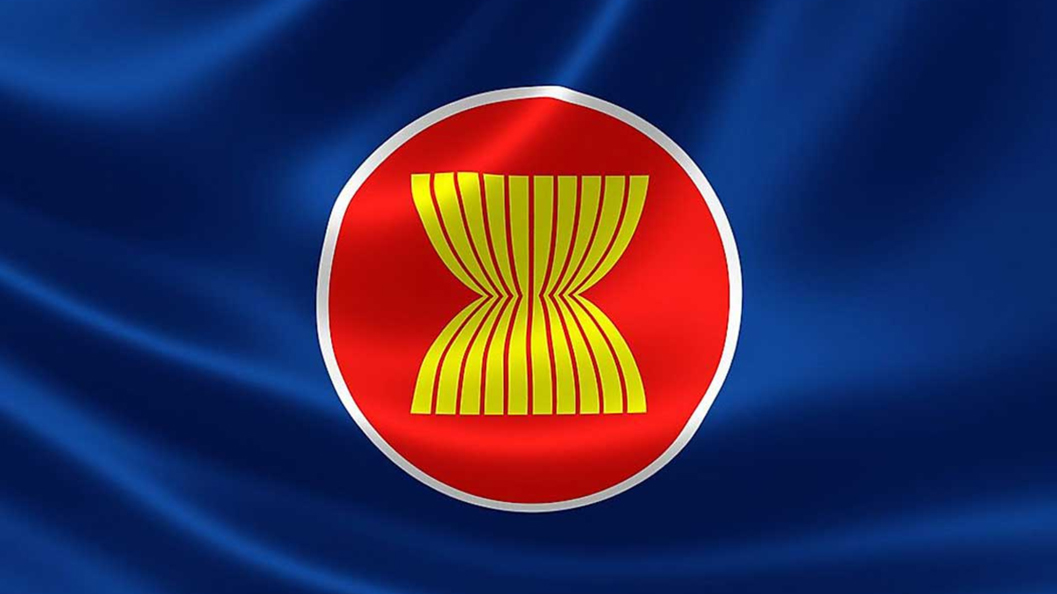The Association of Southeast Asian Region is a regional multilateral grouping which intends to cater to economic and security cooperation among its member states: Thailand, Myanmar, Singapore, Malaysia, Brunei, Indonesia, Cambodia, Laos, Vietnam and the Philippines. The group has played varied role in terms of regional and economic integration among the member states, signing of trade agreements and the inclusion of external player in the region for the better integration of the Southeast Asian region with the global order.
The Bloc’s History
It was founded in 1967 with Indonesia, Malaysia, Thailand, Singapore and the Philippines as the initial members. It was formed with the intent to check the spread of communism in the region. However, it could not do much to check the Cold War politics and its overall impact on states. Overall, this region became one of the hotspots of the Cold War contestation. Such manifestations were seen during the war between the U.S. and Vietnam in the 1960s and later followed by the Cambodian war in 1979.
Nevertheless, the current institutional framework of ASEAN is a result of evolution of rules and regulations. In 1976, the member states of ASEAN signed the Treaty of Amity and Cooperation (TAC) in Southeast Asia, which emphasises on mutual respect and noninterference in other state’s affairs. Relative peace was restored in the region following the collapse of the Soviet Union and the end of the Cambodian War in 1991, and the normalization of relations of the U.S. and China with Vietnam. The global changes gave space to ASEAN to enhance its initiatives and interaction capacity.
In 2007, the ten member states adopted the ASEAN Charter, a constitutional document that provided the grouping with legal status and an institutional framework. The Charter laid the blueprint for a community made up of three branches: the ASEAN Economic Community (AEC), the ASEAN Political-Security Community and the ASEAN Socio-Cultural Community.
The ASEAN Summit is the highest policy-making body which comprises of the Head of the state or government of ASEAN member states. The ASEAN Summit is held twice a year and it is held by the Chairman of the ASEAN.
Apart from this, the ASEAN Charter calls for expanding its external relations by conferring the external members any of the status of Dialogue Partners, Sectoral Dialogue Partner and Development Partner Among all of them, the status of Dialogue Partner is the most extensive one. Presently, ASEAN is having 10 Dialogue Partners and their partnerships are characterised by regular high-level exchanges and dialogues and including ministerial meetings and summit meetings. There are also regional cooperation mechanisms such as the ASEAN Plus Three and East Asia Summit. The East Asia Summit which was initiated in 2005, looks into a range of issues such as peace and security, sustainable development, poverty alleviation, climate environment and energy cooperation. The ASEAN Regional Forum also engages with the Dialogue Partner. Basically, it is a security dialogue which focuses on specific regional security issues and global security concerns as well. It also addresses other vital issues such as terrorism, counter-terrorism, maritime security, and disaster relief.
Overall, the ASEAN has evolved from initially servingregional issues to engaging with external states; which in turn has enhanced Asia-Pacific stature globally.
The Hits and Misses of ASEAN
The ASEAN has been one of the successful multilateral regional institutions which has evolved through various phases. As stated above, the region of Southeast Asia was engulfed with the fraught climate of Cold War’s bloc politics. The ASEAN has acted as an agent of regional cohesion. It has cultivated the Indonesian culture of “musyawarah and mufakat” (consultation and consensus) which now hailed as the “ASEAN Way”. This approach facilitated the persistent inclusion, economic and political engagements with several regimes. This was followed with an expansion of membership in ASEAN with the inclusion of Brunei (1984), Vietnam (1995), Laos and Myanmar (1997) and Cambodia (1999). Timor-Leste will be the latest state to acquire the membership of ASEAN by 2025 or 2026. In addition, ASEAN has created an indispensable diplomatic platform that regularly brings all the great powers together and facilitates regular interactions. It has acted as a forum for dialogue, defusing disputes between states and ensuring relative regional stability.
However not all regional issues are addressed adequately by ASEAN. Looking at the recent times, the Rohingya’s refugee crisis in the Rakhine state of Myanmar which started in 2016-17 has raised critiques on ASEAN for its effectiveness in dealing with this humanitarian issue. Myanmar’s crackdown on Rohingya’s, the influx of refugees and the gross human right violations were not condemned or sanctioned by ASEAN as it was supposed to be. ASEAN has put refugees and asylum seekers into human rights issues. It also upholds a strong commitment towards human rights enforcement as laid in the ASEAN Charter of 2008, in the establishment of ASEAN Intergovernmental Commission on Human Rights in 2009 and the declaration of support for human rights in 2012. However, the influx of Rohingya refugees was handled at the inter-state level rather than by the regional institution.
Furthermore, the impending Myanmar crisis since 1st February 2021 when the military coup overthrew the democratic government (led by the National League for Democratic Party) of Myanmar, have also posed critical questions on ASEAN. The usefulness of its legacy principles such as the non-interference in the internal matters of the member states’ which is enshrined in the ASEAN Charter and propagated by the ‘ASEAN Way’. On the other hand, not all of the member states of ASEAN share a similar viewpoint and level of concern about the Myanmar crisis.
A “Five Point Consensus” was adopted by the ASEAN in April 2021 but Myanmar refrained from endorsing the same. In 2022, ASEAN leaders’ decided to exclude the military generals and their appointees from attending all the group’s meeting. This decision was taken amid Myanmar’s National Unity Government (controlled by the junta) failure to tackle the gross level of violence and human rights violations.
The ASEAN Chair of the year 2022 and 2023 was headed by Cambodia and Indonesia respectively. Both states have put efforts towards the acceptance and implementation of the “Five-Point Consensus” on Myanmar, but have met with little success. It was during the Laos Chairmanship of ASEAN in 2024, that for the first time a senior official from Myanmar attended the summit. However, the participation of Myanmar’s senior official in the ASEAN Summit does not implies the resolvability of the impending crisis. Additionally, whether ASEAN under the new chairmanship of Malaysia is going to continue to include the officials of Myanmar in the upcoming Summit, will be interesting to watch. Therefore, given the lack of resolve of Myanmar to resolve its crisis, ASEAN’s inability to implement the “Five-Point Consensus” and the differing stances of ASEAN’s member states on the same, have turned out to be an existential nightmare.
On the other hand, the South China Sea and its continuing dispute is another issue on which ASEAN is trying to achieve a consensual agreement. The ASEAN has been struggling to negotiate the Code of Conduct (COC) with China since 2002. The involvement of multiple claimants, varying perception of the United Nations Convention on the Law of the Seas (UNCLOS) and pursuance of self-interests etc., are acting like major irritants in this ongoing maritime dispute. The ASEAN is interested in managing the dispute since it affects regional peace and member states’ relations with China which can also exacerbate the U.S.-China power play in the region. Given the complexity, the COC is an ASEAN-driven approach and consensus based dispute management mechanism which aims to manage the dispute. However given the complex nature of the dispute, differing strategies adopted by claimant states to assert its self-interests over resources and delay to implement the legally binding COC have decreased ASEAN’s consistency in managing SCS dispute. Although ASEAN is committed toward the implementation of the COC, its effectiveness and time-bound execution depends on a range of internal and external factors.
Nevertheless, despite of the ongoing challenges faced by ASEAN, this multilateral regional institution has come a long way in ensuring overall peace and stability in the region of Southeast Asia. It has played a quintessential role in the overall integration of the region of Southeast Asia.




